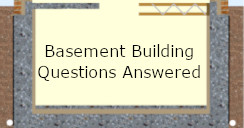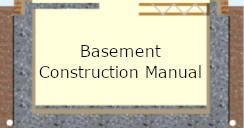|
|
Curing floor concrete.
Curing of concrete is defined as providing adequate moisture, temperature, and time to allow the concrete to achieve the desired properties for its intended use. This would mean maintaining a relative humidity in the concrete of greater than 80 percent, a temperature greater than 10 degrees Centigrade, and for a time typically ranging from three to 14 days depending on the specific application. When these recommendations are properly specified and performed in the field, the final properties of the concrete mixture will be achieved.
Turning fresh, fluid concrete into something like rock is not achieved by drying. Indeed, drying too early prevents the rock-like objective being fully achieved.
However, after a month or two it might be hoped that the concrete dries so that floor finish adhesives adhere. But this would be after the structure is finished with a roof on and windws in.
Until then, it is good to prevent the concrete drying out.
|
|
|
The main causes of drying are higher temperature, wind and strong sunshine.
In the UK, most times of the year, we don't have too much of any of these, and we expect a bit of rain before morning. In which case we probably don't need to do anything.
About half our concrete is in walls formed inside formwork.
The simple, and essential, precaution is to leave the formwork tightly clamped against the fresh concrete for 3 days.
When I last worked on large projects, the daily routine was always
-
Formwork carpenters work all day erecting formwork.
-
About 2pm the concrete gang start filling walls.
-
About 4.30pm the carpenters go home, the concrete gang are catching up fast..
-
By 6pm all the formwork is filled.
-
7.30am formwork carpenters start work and immediately loosen nuts and pull formwork away from the green, hot, relatively soft concrete.
AND A CLOUD OF VAPOUR DRIFTS AWAY ON THE BREEZE.
In less than 24 hours, most basement concrete in the UK has been ruined by the specialists relied upon to do their work well.
This concrete slab was poured in strong sunshine in hot weather during July 2022. Unusually for my concrete it has a layer of weak, powdery, dried cement paste on top that nothing would adhere to.

I stood with a hosepipe keeping the concrete wet for several hours after the concrete was in. As the sun went behind the house leaving the slab in shade, we set up a hosepipe and sprinkler which was left on till 10pm (by which time there was no sun, no wind and the temperature had dropped).
By design, the concrete in one corner of the excavation was left empty so that by 10pm there was a substantial pond of water that would have maintained humidity in the air down the hole.
All this meant that the slab concrete was cured well and did not crack from drying out prematurely.
But we had to clean that powder, the laitance, off the surface beneath the walls to get a good joint later.
Back to the Basement Building Questions Answered menu.

|
Back to the Basement Building Construction Manual menu.

|
For a fixed fee of £199 I will answer all your questions by email. More details here.

|
|
|
|

